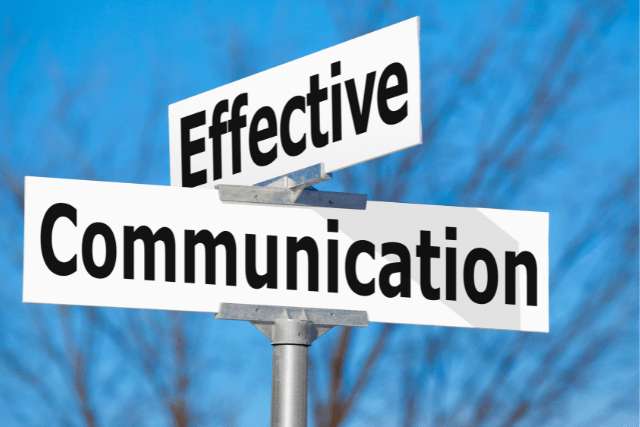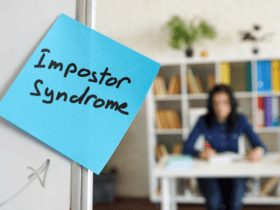The pursuit of mastering the art of effective communication encompasses various forms of communication, including oral, written, and non-verbal modalities.
This article will provide a comprehensive overview of strategies and techniques for improving communication skills.
Key Takeaways
- Effective communication involves informing others while actively listening and accepting input.
- Connecting with others, understanding their needs, and responding to real-time feedback is important.
- Improving communication skills includes keeping the audience in mind, using concise language, and choosing the best method to deliver the message.
- Strategies for face-to-face communication include making eye contact, asking for feedback, and minimizing distractions.
Types of Communication Skills
Communication skills are essential for effectively conveying information, ideas, and emotions to others. Several types of communication skills can be categorized into verbal, non-verbal, written, and listening skills. Here’s an overview of each category:
1. Verbal Communication Skills
Verbal communication involves the use of spoken words to convey information. Key verbal communication skills include:
- Clarity: Speak clearly and concisely to ensure your message is easily understood.
- Tone: Using an appropriate tone of voice that matches the context and conveys the intended emotion.
- Vocabulary: Utilizing a wide range of words to express ideas accurately and effectively.
- Articulation: Pronouncing words correctly and enunciating clearly to avoid miscommunication.
- Pace: Speaking quickly allows listeners to follow and comprehend the message.
2. Non-verbal communication Skills
Non-verbal communication involves using body language, facial expressions, and gestures to convey information without using words. Key non-verbal communication skills include:
- Eye contact: Maintaining appropriate eye contact to show engagement and interest.
- Facial expressions: Using facial expressions to convey emotions and reactions.
- Posture: Adopting a confident and open posture to convey a positive attitude.
- Gestures: Utilizing hand gestures to emphasize points and clarify meaning.
- Proximity: Maintaining an appropriate physical distance to respect personal boundaries and cultural norms.
3. Written Communication Skills
Written communication involves using text to convey information through various mediums, such as emails, reports, and social media posts. Key written communication skills include:
- Grammar: Using correct grammar to ensure clear and accurate communication.
- Punctuation: Applying appropriate punctuation to enhance readability and convey meaning.
- Spelling: Ensuring correct spelling to maintain professionalism and credibility.
- Structure: Organizing content logically and coherently to facilitate understanding.
- Conciseness: Writing succinctly and avoiding unnecessary information to maintain reader interest.
4. Listening Skills
Listening skills are crucial for understanding and interpreting the messages conveyed by others. Key listening skills include:
- Active listening: Focusing on the speaker, avoiding distractions, and providing feedback to show understanding.
- Empathy: Demonstrating empathy and understanding towards the speaker’s emotions and perspective.
- Open-mindedness: Being receptive to new ideas and avoiding judgment or bias.
- Summarizing: Paraphrasing and summarizing the speaker’s main points to confirm understanding.
- Asking questions: Seeking clarification or additional information to ensure comprehension.
Developing strong communication skills in each category can enhance personal and professional relationships, improve teamwork, and increase effectiveness in various settings.

Effective Communication Strategies
Effective communication is essential for building strong relationships, fostering collaboration, and successfully exchanging ideas and information. Here are some strategies to enhance your communication skills:
1. Know your audience
Understand your audience’s needs, preferences, and background to tailor your message accordingly. Consider age, culture, education, and professional background when communicating.
2. Be clear and concise
Express your ideas and information in a clear, straightforward manner. Avoid using jargon, complex language, or excessive detail that may confuse or overwhelm your audience.
3. Use appropriate language and tone
Choose words and a tone of voice that are suitable for the context and audience. Be respectful, professional, and considerate of cultural differences and sensitivities.
4. Listen actively
Pay close attention to the speaker, avoid interrupting, and provide feedback to show you are engaged and understand their message. Practice empathy and open-mindedness when listening to others.
5. Ask questions and seek clarification
If you are unsure about the meaning or intent of a message, ask questions to clarify and gain a better understanding. Encourage your audience to do the same if they have any doubts or concerns.
6. Use non-verbal cues effectively
Utilize body language, facial expressions, and gestures to reinforce your message and convey emotions. Maintain eye contact, be confident, and be mindful of personal space.
7. Be mindful of cultural differences
Recognize and respect cultural differences in communication styles, preferences, and norms. Adapt your communication approach to accommodate these differences and avoid misunderstandings.
8. Use appropriate communication channels
Select the most suitable communication channel for your message, considering factors such as urgency, formality, and the need for documentation. Communication channels include face-to-face conversations, phone calls, emails, and instant messaging.
9. Provide feedback and encourage feedback from others
Offer constructive feedback to others and be open to receiving feedback on your communication. Use this feedback to improve your communication skills and enhance your relationships.
10. Practice and develop your skills
Continuously improve your communication skills through practice, self-reflection, and seeking feedback from others. Consider participating in workshops, training courses, or reading books on effective communication to develop your abilities further.
Improving Communication Skills
Improving communication skills involves employing strategies such as considering the audience, using concise language, selecting appropriate delivery methods, and actively engaging the audience.
Communication techniques play a crucial role in maintaining effective communication in virtual settings.
It is important to adapt to the virtual environment by using visual aids, clear language, and encouraging active participation.
Enhancing communication skills in the workplace is essential for effective collaboration and productivity.
This can be achieved by practising active listening, understanding the needs of colleagues, and responding to real-time feedback.
Choosing the right communication method, like talking in person, can strengthen relationships and reduce misunderstandings.
By actively engaging the audience and leveraging these strategies, individuals can enhance their communication skills in virtual settings and the workplace.
Improving Online Communication
Enhancing online communication involves implementing techniques that promote clear and efficient exchange of information in virtual settings.
Managing virtual meetings and enhancing virtual teamwork are crucial to improving online communication.
To effectively manage virtual meetings, it is important to set time limits, be mindful of participants’ attention, and recap important details. Visuals and clear language can also aid in conveying information effectively.
Encouraging active participation from all participants is essential for enhancing virtual teamwork.
This can be achieved by creating a conducive environment that fosters collaboration and engagement.
Importance of Active Listening
Active listening is crucial in effective communication by facilitating better understanding, reducing misunderstandings, and promoting stronger relationships.
Active listeners demonstrate genuine interest and concern by fully focusing on the speaker and asking clarifying questions.
This practice allows for an improved understanding of the speaker’s message and helps to avoid making assumptions.
Active listening also strengthens relationships by creating a safe and supportive environment for communication. It allows individuals to feel heard and valued, fostering trust and mutual respect.
It also promotes effective collaboration and problem-solving, encouraging open and honest dialogue. To build stronger relationships and avoid misunderstandings, it is essential to practice patience and refrain from making assumptions.
This approach fosters a culture of effective communication and strengthens connections between individuals.

Effective Written Communication
One key aspect of effective written communication is conveying information clearly and concisely using appropriate language and logical organization.
When it comes to written communication, common writing mistakes can hinder the effectiveness of the message being conveyed. These mistakes include using overly complex or technical language, lacking clarity in the message, and neglecting proper grammar and punctuation.
Effective email communication is particularly important in today’s digital age. To ensure effective email communication, it is crucial to use a clear and concise subject line, address the recipient appropriately, and structure the email logically and organised.
It is important to proofread the email for errors and ensure that the tone and language are appropriate for the intended audience.
Effective Presentation Skills
Enhancing presentation skills involves preparing and organizing content, utilizing visual aids, engaging the audience, practising delivery, and adapting presentation style to the audience.
Effective presentation techniques are crucial for capturing and maintaining the audience’s attention.
Engaging the audience requires using interactive methods such as asking thought-provoking questions, incorporating real-life examples, and encouraging participation.
Visual aids, such as slides or props, can effectively enhance the delivery of the message by providing visual representations and reinforcing key points.
Practising delivery helps to ensure a smooth and confident presentation while adapting the presentation style to the audience ensures that the content is tailored to their needs and preferences.
Engaging the audience throughout the presentation is essential for creating a memorable and impactful experience.
Conclusion
Effective communication skills are crucial for personal and professional success. They enable individuals to build strong relationships, collaborate efficiently, and convey ideas and information clearly and accurately.
You can become a more effective communicator by understanding your audience, being clear and concise, using appropriate language and tone, actively listening, and continuously working on improving your skills.
Embracing these strategies and adapting to different communication contexts will enhance your interactions with others and contribute to your overall growth and development as an individual.














Leave a Reply